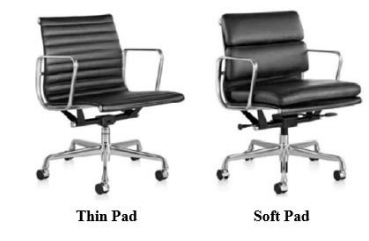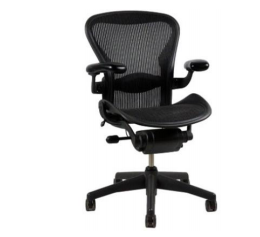“The Ninth Circuit found that the mere fact that a feature is part of the actual benefit prompting a consumer to purchase a product doesn’t establish the functionality of that feature.”

Eames Chairs
On June 25, the U.S. Court of Appeals for the Ninth Circuit issued a decision in Blumenthal Distributing v. Herman Miller, Inc. in which the appellate court reversed some parts of a Central District of California ruling on trade dress and trademark infringement claims related to office chairs sold by Herman Miller, and affirmed others. The Ninth Circuit’s decision discusses at length the issue of functionality, an area of trademark law which is undefined by statute and is notable for overturning parts of the district court decision because of an erroneous jury instruction based upon the Ninth Circuit’s own model rules.
The decision also includes a partial dissent by Circuit Judge Michelle Friedland on the issue of dilution, with Judge Friedland arguing that Herman Miller hadn’t proven the requisite fame to prevail on its trademark dilution claims.
Erroneous Jury Instruction
This case stems from a lawsuit filed by Herman Miller alleging that Blumenthal was selling knockoff versions of two chairs sold by the company: the Eames chair, which has thin seating pads, metal armrests and swivels above a metal base with five wheels; and the Aeron chair, which is more contoured, uses thinner material, includes lumbar support and swivels above a plastic base with five wheels. A jury verdict entered in the case awarded Herman Miller nearly $3.4 million in infringement damages and $3 million in dilution damages with respect to the Eames chair. However, the jury found that the Aeron chair’s trade dress was unprotectable because it was functional. Herman Miller’s trademark covering the Aeron chair was also invalidated for functionality.

Aeron Chair
In discussing the law on functionality, the Ninth Circuit majority noted that a complex legal doctrine surrounding this topic has developed since the U.S. Supreme Court identified separate legal tests for utilitarian functionality and aesthetic functionality in TrafFix Devices v. Marketing Displays (2001). To test for utilitarian functionality, the Ninth Circuit employs a four factor test from its 1998 decision in Disc Golf Association v. Champion Discs which looks at whether the design yields a utilitarian advantage, whether alternative designs are available, whether advertising touts the design’s utilitarian advantages and whether the design results from a simple or inexpensive method of manufacture. In assessing aesthetic functionality, the Ninth Circuit noted that the inquiry looks at whether the protection of a particular design forces other sellers to use more expensive designs, creating a competitive disadvantage for reasons other than a particular design’s ability to indicate a product’s source.
The Ninth Circuit majority dismissed Blumenthal Distributing’s arguments that the overall appearance of the Eames chair was functional. Although the design of the Eames chair included functional elements, the appellate court found that such elements do not make an overall appearance functional as a matter of law. Blumenthal also argued that the chairs had utilitarian functionality under the Disc Golf factors. However, the Ninth Circuit found abundant evidence that the overall appearance of the Eames chair derived from non-utilitarian design choices and any rebuttals from Blumenthal on the supposed utilitarian features of the Eames chair but cites no evidence of the benefits of those features.
On cross-appeal, Herman Miller challenged the jury’s finding that the Aeron trade dress was functional, an argument the Ninth Circuit sided with after finding that the instruction to the jury on functionality misstated the law regarding functionality. The particular instruction given to the jury read:
A product feature . . . is non-functional if its shape or form makes no contribution to the product’s function or operation. If the feature is part of the actual benefit that consumers wish to purchase when they buy the product, the feature is functional. However, if the feature serves no purpose other than as an assurance that a particular entity made, sponsored or endorsed the product, it is nonfunctional.
Citing to its 2006 decision in Au-Tomotive Gold v. Volkswagen of America, the Ninth Circuit found that the mere fact that a feature is part of the actual benefit prompting a consumer to purchase a product doesn’t establish the functionality of that feature. Further, the instruction failed to encompass either the Disc Golf factors on utilitarian functionality or other case law on aesthetic functionality, thus the instruction didn’t fairly and correctly cover the law on functionality and required a remand despite the Ninth Circuit’s acknowledgment that the erroneous instruction was based upon model civil jury instructions promulgated by the Ninth Circuit.
Judge Friedland Splits with Panel Majority on Evidence of Fame for Dilution
The Ninth Circuit also reversed the jury verdict on trademark dilution regarding the Eames chair, finding that the chair had not acquired the requisite level of fame to support a finding of dilution. The Ninth Circuit noted that the Trademark Dilution Revision Act of 2006 eliminated the concept of niche fame, or fame within a certain geographic area or specialized market segment, requiring a showing that a mark is widely recognized by the U.S. general consuming public to support dilution. The Ninth Circuit in Thane International v. Trek Bicycle Corp. (2002) established a high standard for establishing fame, finding that Trek had failed to establish “household name” fame for its stationary exercise machine mark despite multi-million advertising expenditures, 4.5 million annual website visitors and a Lance Armstrong sponsorship. The 2006 revision to dilution law didn’t affect the Thane standard, the Ninth Circuit held, and the evidence of the Eames’ chair fame offered by Herman Miller did not meet the “household name” standard.
Dissenting on this last point was Judge Friedland, who argued that Herman Miller presented sufficient evidence so that the jury could reasonably find that the Eames chair was famous. This evidence included testimony on the “iconic” and “ubiquitous” nature of the Eames chair, its depiction in numerous films and TV shows like “Mad Men” and the inclusion of the chair in every U.S. museum with a design collection.
Judge Friedland also took the majority to task for its side-by-side comparison of Herman Miller’s evidence with the facts in Thane, arguing that the present case had stronger evidence of the Eames chair’s fame than existed for the standard character mark “TREK,” a non-distinctive term with multiple meanings. Unlike “TREK,” the Eames chair has a distinctive product design that a jury could have inferred was memorable to many consumers. Further, while the “TREK” mark was incidental to the media portrayals provided as evidence in Thane, Herman Miller’s evidence pointed to the fact that the design of the Eames chair was the reason for its many popular culture depictions and the inclusion of the chair in museum collections. Finally, Judge Friedland argued that Thane recognized that evidence of cultural significance may provide evidence of fame.
Even if too few Eames chairs were sold for them to be present in most households or offices, and even if there was too little advertising for it to reach the average consumer, HM’s evidence nevertheless allowed the jury to conclude that many individual chairs reached a wide audience and were recognized on account of their distinctive design. – Judge Friedland

![[IPWatchdog Logo]](https://ipwatchdog.com/wp-content/themes/IPWatchdog%20-%202023/assets/images/temp/logo-small@2x.png)

![[Advertisement]](https://ipwatchdog.com/wp-content/uploads/2024/04/UnitedLex-May-2-2024-sidebar-700x500-1.jpg)
![[Advertisement]](https://ipwatchdog.com/wp-content/uploads/2024/04/Artificial-Intelligence-2024-REPLAY-sidebar-700x500-corrected.jpg)
![[Advertisement]](https://ipwatchdog.com/wp-content/uploads/2024/04/Patent-Litigation-Masters-2024-sidebar-700x500-1.jpg)

![[Advertisement]](https://ipwatchdog.com/wp-content/uploads/2021/12/WEBINAR-336-x-280-px.png)
![[Advertisement]](https://ipwatchdog.com/wp-content/uploads/2021/12/2021-Patent-Practice-on-Demand-recorded-Feb-2021-336-x-280.jpg)
![[Advertisement]](https://ipwatchdog.com/wp-content/uploads/2021/12/Ad-4-The-Invent-Patent-System™.png)






Join the Discussion
No comments yet.